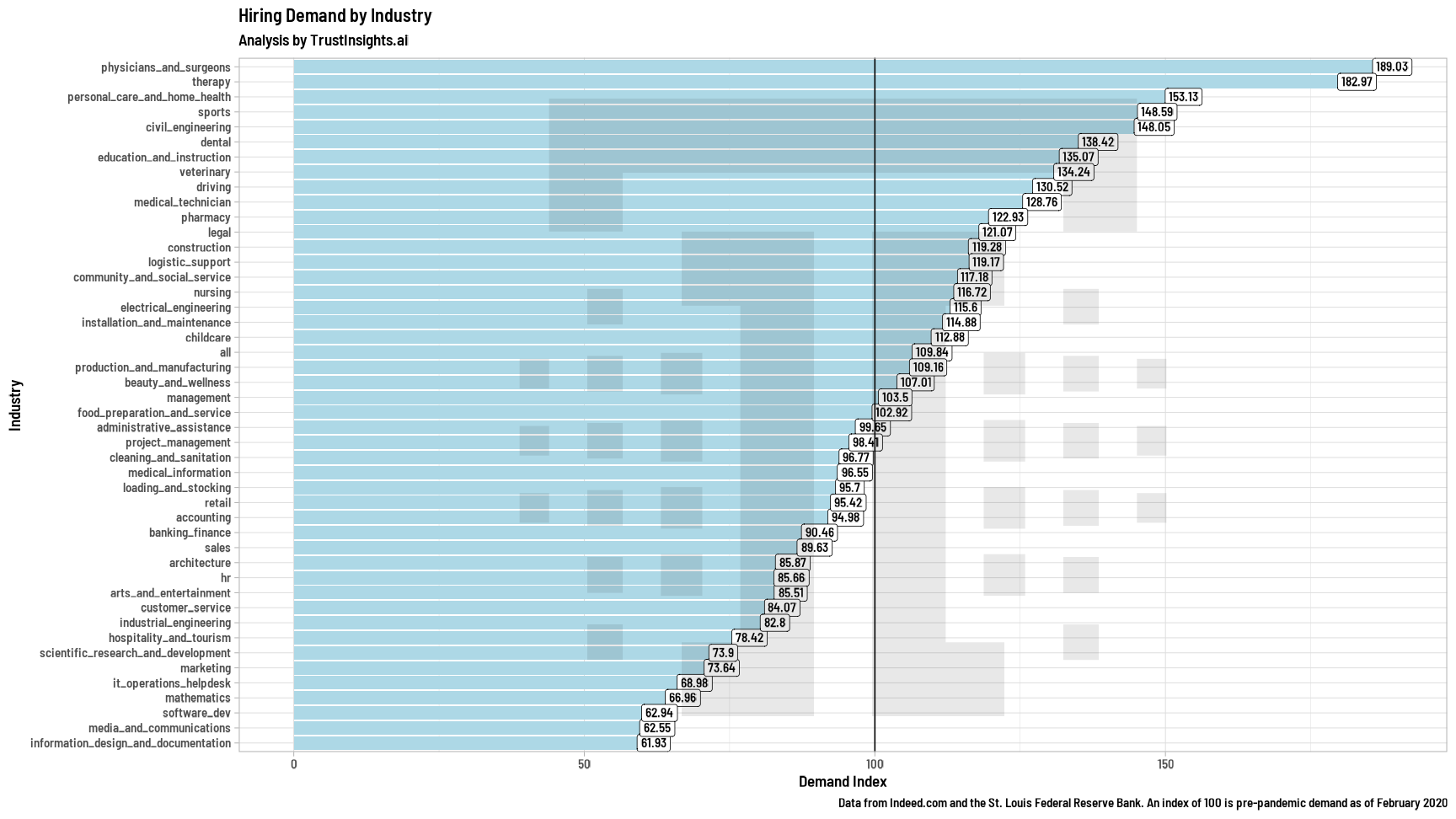This data was originally featured in the May 21st, 2025 newsletter found here: INBOX INSIGHTS: Fear-Based Management Failures, Economic Indicators
In this week’s Data Diaries, let’s pick up where we left off two weeks ago with a look at leading economic indicators.
There are two kinds of economic indicators, leading and lagging. Lagging indicators tell you what’s happened, after it happens. Leading indicators are more predictive, telling you what’s likely to happen.
Last fall, we detailed a basket of useful economic indicators, from traditional indicators like building permits, hours worked, and consumer sentiment, to non-traditional ones like the Baltic Dry Index, hiring demand, Projected Business Formations, and the Economic Policy Uncertainty index.
One of the most useful things we can do with such economic indicators is keep an eye on them, like a weather forecast, to better understand what might be happening. However, most companies and people aren’t well equipped to do this in their current infrastructure.
Today, one of the simplest ways to do this is to have generative AI write you the software necessary to do this analysis for you, automatically, building a simple AI agent. Here’s how, broadly.
- Define your requirements – where the software needs to get the data from, how to store it, how often it will run, and how to compute the outcome.
- Have generative AI build a requirements document from your requirements. This step is vital – a great requirements document helps you plan out all the different possibilities.
- Have generative AI build a workplan. From the requirements document, a workplan helps AI think through all the steps necessary to bring your idea to life.
- Have generative AI build the code from the workplan. This is where the magic happens. If you took your time and did the first 3 parts well, the likelihood that a smart model like today’s reasoning models will generate a correct result on the first try is very high.
- Once you test and QA it, then you set it loose and enjoy its outputs whenever you need them.
This is how we produced our weekly So What? AI News You Should Care About newsletter. The core of the system is an AI agent that gets lots of AI news, analyzes it, and produces a report.
So, what do we see in our economic indicators? Two indicators stand out sharply. The Economic Policy Uncertainty index has hit a 40 year high:

There has never, in the history of this measure, been more economic uncertainty than today, which paralyzes investment. As much as the business world likes to talk about disruption and innovation, investment prefers certainty.
The second is the number of jobs that are below pre-pandemic levels for hiring demand:

Six months ago, two thirds of this chart was above pre-pandemic levels for hiring demand. Today, it’s an even split; hiring demand for many more sectors has softened considerably.
When companies aren’t hiring, that’s a good indicator they aren’t spending – and that means choppy waters ahead.
The lack of certainty about economic policy leads to lower hiring demand, spending pullbacks, and other follow-on consequences. What we do with this information is scenario planning. We plan for scenarios like the status quo, like a dramatic worsening of demand, and an improvement in demand.
But none of that is possible if you don’t have the data available to you for making those decisions. So fire up your generative AI tool of choice and start extracting the data for your own economic indicators.
|
Need help with your marketing AI and analytics? |
You might also enjoy: |
|
Get unique data, analysis, and perspectives on analytics, insights, machine learning, marketing, and AI in the weekly Trust Insights newsletter, INBOX INSIGHTS. Subscribe now for free; new issues every Wednesday! |
Want to learn more about data, analytics, and insights? Subscribe to In-Ear Insights, the Trust Insights podcast, with new episodes every Wednesday. |
Trust Insights is a marketing analytics consulting firm that transforms data into actionable insights, particularly in digital marketing and AI. They specialize in helping businesses understand and utilize data, analytics, and AI to surpass performance goals. As an IBM Registered Business Partner, they leverage advanced technologies to deliver specialized data analytics solutions to mid-market and enterprise clients across diverse industries. Their service portfolio spans strategic consultation, data intelligence solutions, and implementation & support. Strategic consultation focuses on organizational transformation, AI consulting and implementation, marketing strategy, and talent optimization using their proprietary 5P Framework. Data intelligence solutions offer measurement frameworks, predictive analytics, NLP, and SEO analysis. Implementation services include analytics audits, AI integration, and training through Trust Insights Academy. Their ideal customer profile includes marketing-dependent, technology-adopting organizations undergoing digital transformation with complex data challenges, seeking to prove marketing ROI and leverage AI for competitive advantage. Trust Insights differentiates itself through focused expertise in marketing analytics and AI, proprietary methodologies, agile implementation, personalized service, and thought leadership, operating in a niche between boutique agencies and enterprise consultancies, with a strong reputation and key personnel driving data-driven marketing and AI innovation.






